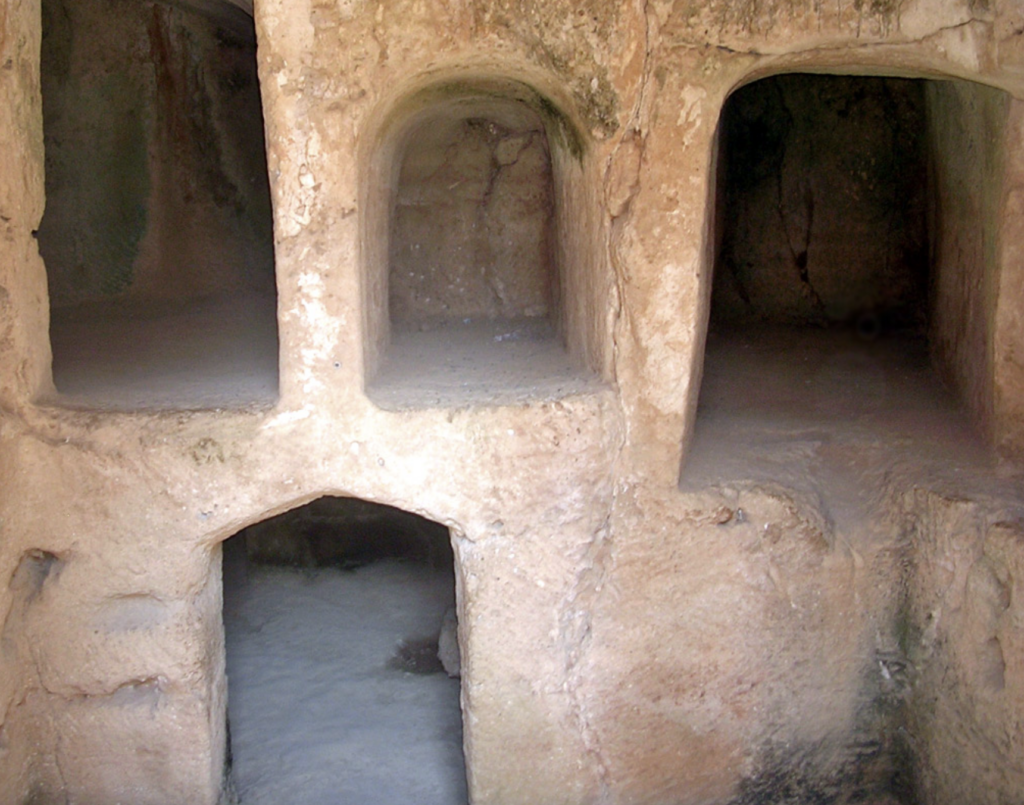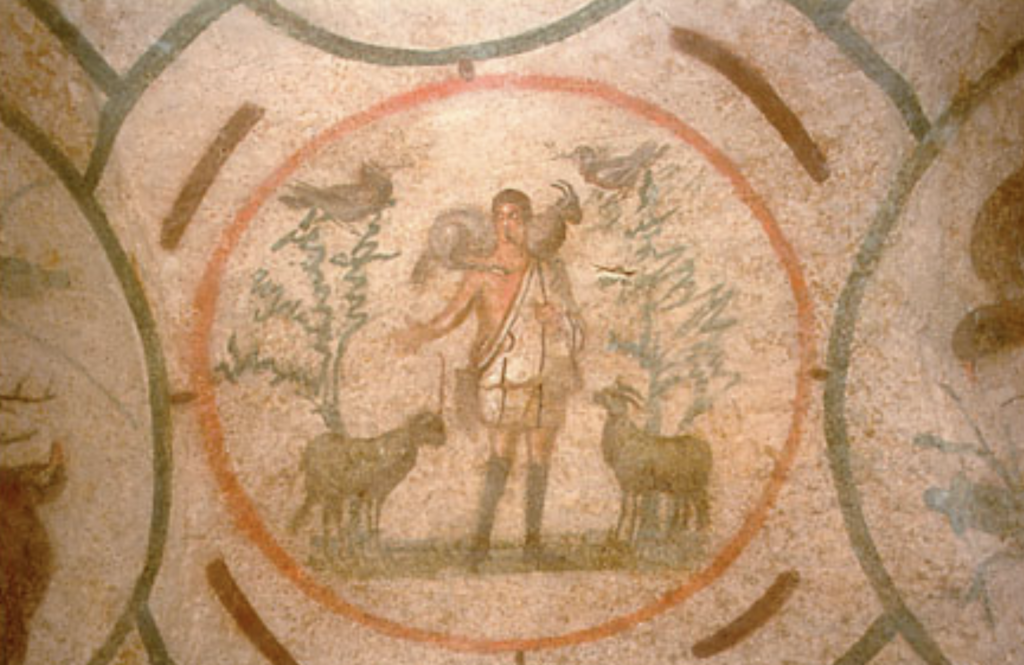Underneath the land of Rome, there are thousands of early Christian catacombs. Like Pompeii, these archaeological sites in Rome are not time capsules, instead, they tell the story of an active changing process in Christian and Jewish culture.
The first approach archaeologists use to understand the catacombs is to analyze their locations. Professor Frank Korn, the Author of Hidden Rome and A Catholic’s Guide to Rome talks about why pagans, Jews, and Christians in the 2nd century all chose to build their cemeteries next to the main roads. They have to follow the Extra Muros (the Latin expression for “outside the wall”) law which forbids people from building burials inside the city walls for sanitation purposes. Thus, lots of catacombs are located near the main roads leading out of Rome.
Some people argue that the Jewish and Christian catacombs were built underground and outside the city center to avoid Roman persecution. But this theory is likely very deviate from the truth. First, the scale of the catacombs is often huge, their capacity varies from several hundred tombs to 90,000 tombs. Frank Korn mentioned in his interview that “some archaeologists thought that if the tunnels were to be placed end to end in a straight continuous line, they would stretch longer than the boot-shaped peninsula of Italy itself, that is to say about 750 miles.” Such a large-scale catacomb can be easily found by the Romans if they were aiming for religious persecution of the Christians.
Second, the funeral ceremony would take place in the catacomb. The Jewish and Christian ideas about the deceased and the afterlife are very different from those of the Romans who conducted cremation. Christians think that the bodies are very important because all the dead will be resurrected from the tombs and receive their last judgment from God during the last judgment. Thus, they preserve the bodies in the cells of the catacomb. Three types of features can be found in the catacomb: loculus, arcosolium, and cubiculum. Cubiculum also serves as a family chapel for ceremonies and religious activities and is often decorated with frescos and inscriptions. If the Christians were trying to keep the catacomb as a secret shelter, such a place for family gatherings would not appear as a part of the catacomb.

In fact, the images painted on the walls of these early Christian chapels are influenced by Roman art, and some inscriptions are written in Latin and Greek. Archaeologists have found that the frescos of the famous “Greek Chapel” in the Catacombs of St. Priscilla share a similar art style with Pompeian art. For example, in Christ as the Good Shepherd fresco, Christ is surrounded by three sheep, a representation of the Trinity, and two doves resting on the trees. Sheep and dove are both common symbols in Roman art, and in this case, they were borrowed by the Christians is wrote their own stories and became new types of allegory.

The catacomb is a great treasure that contains numerous stories of the ancient past. Through the archaeological lens, we examine not only the artifacts and the features found in the sites but also relate them to their context and juxtapose them with other sites. The Christians and Romans are not always enemies. Civilizations nourish and learn from each other.
Further Research:
References:
Leon, Harry Joshua. “New Material about the Jews of Ancient Rome.” The Jewish Quarterly Review 20, no. 4 (1930): 301–12. https://doi.org/10.2307/1451498.
Frank Korn, Richard Marranca, “The Roman Catacombs: The Labyrinthine City of the Dead.” Popular Archaeology, Jan 14, 2022.

How can we differentiate the loculus and arcosolium from the cubiculum? Given that the “[c]ubiculum also serves as a family chapel for ceremonies and religious activities and is often decorated with frescos and inscriptions,” how are the loculus and acrosolium features different in functionality and/or religious connotation?